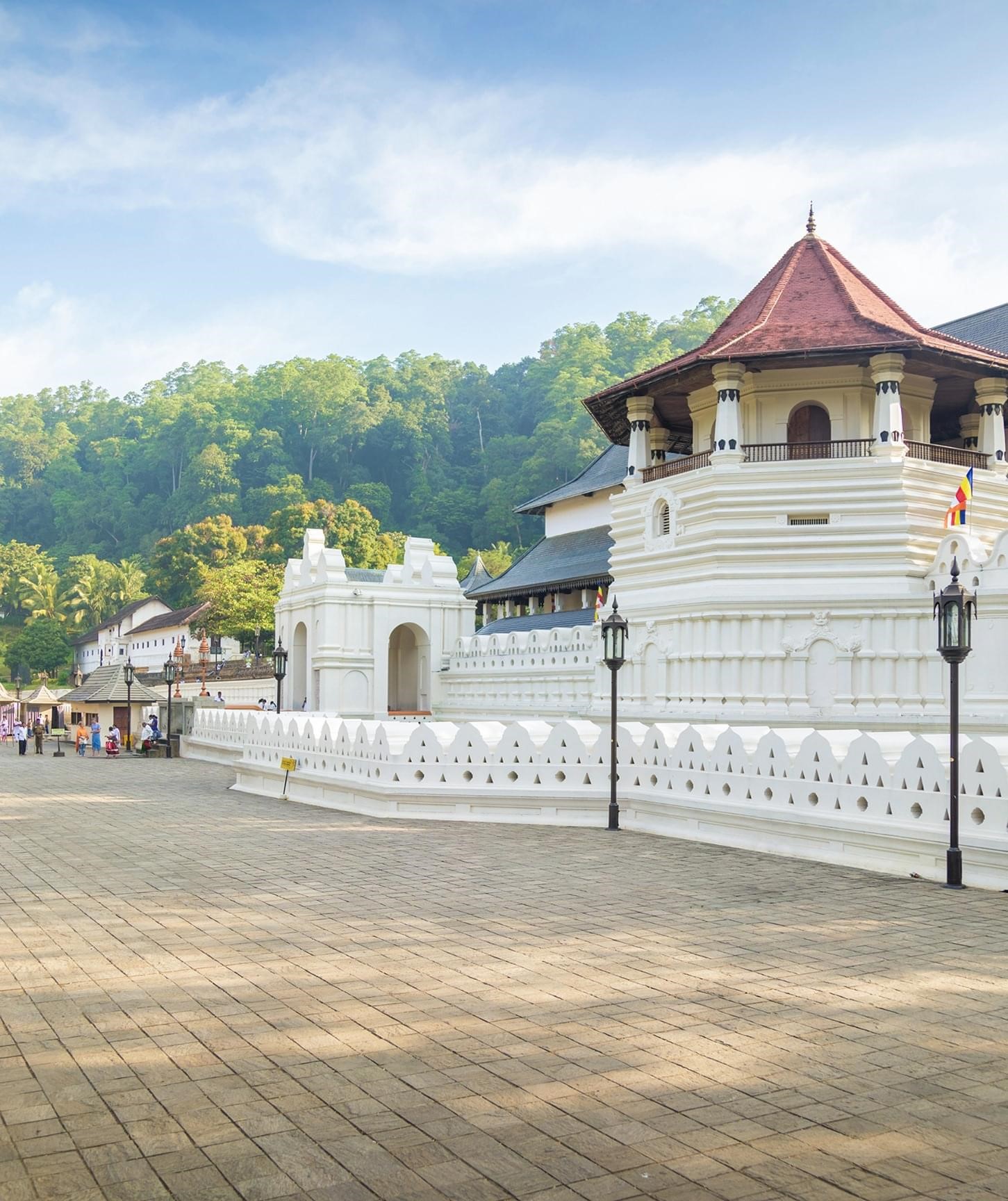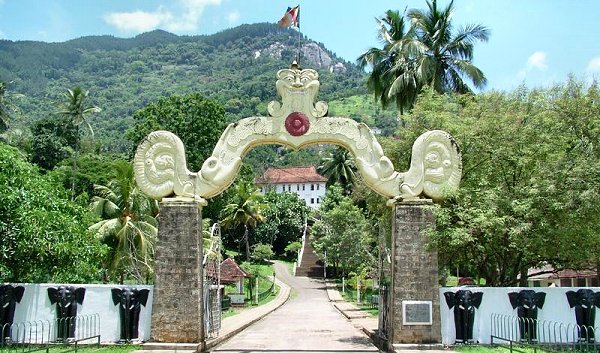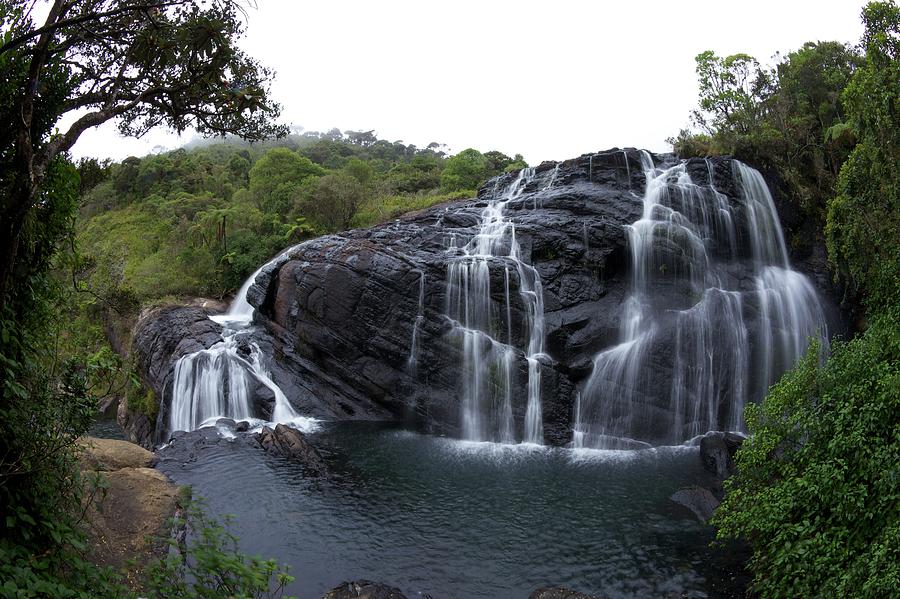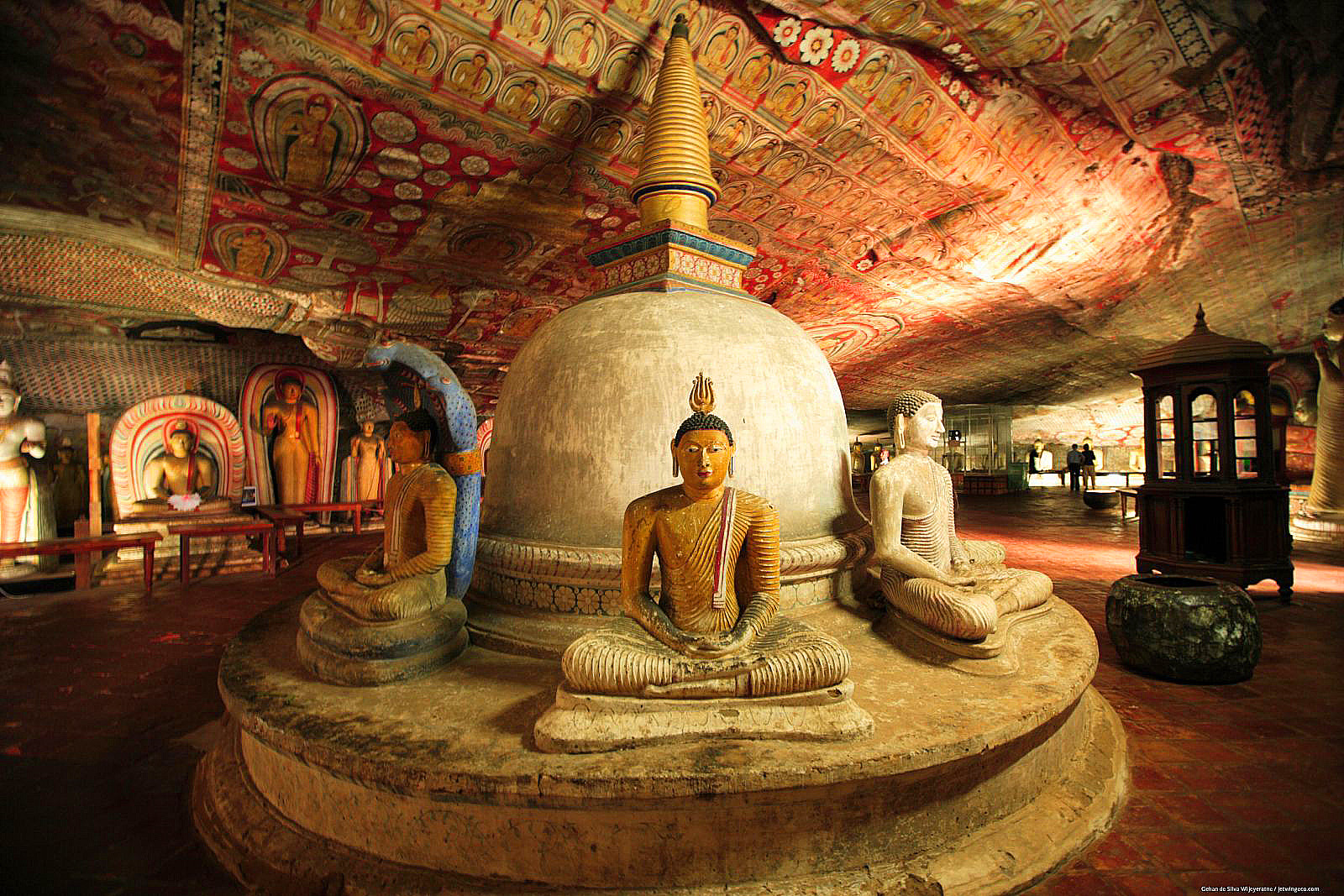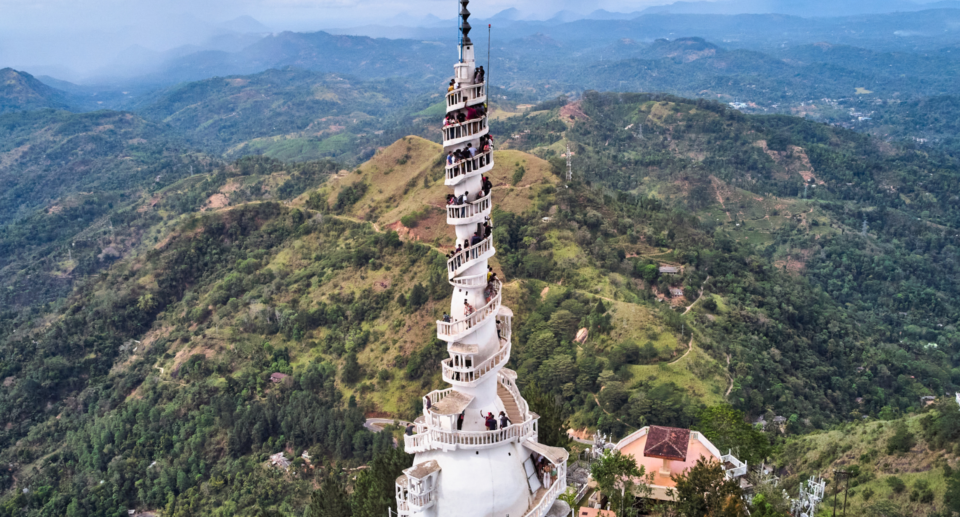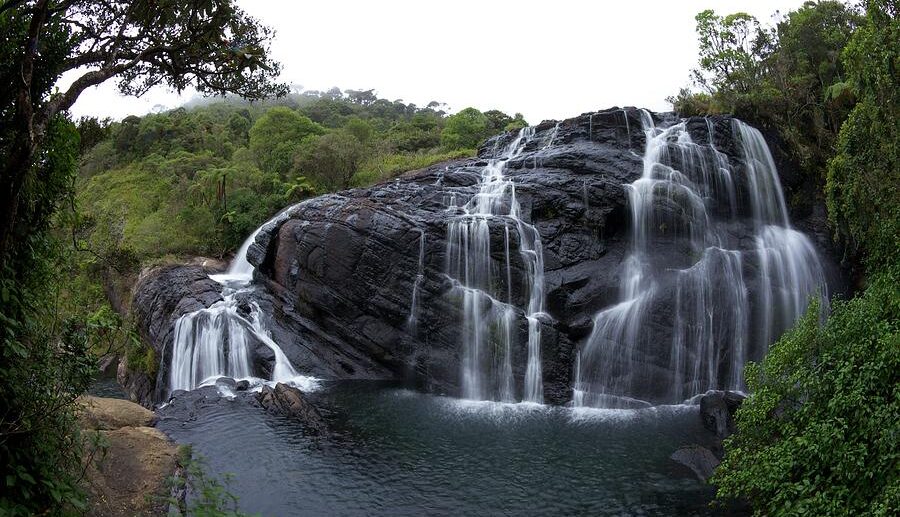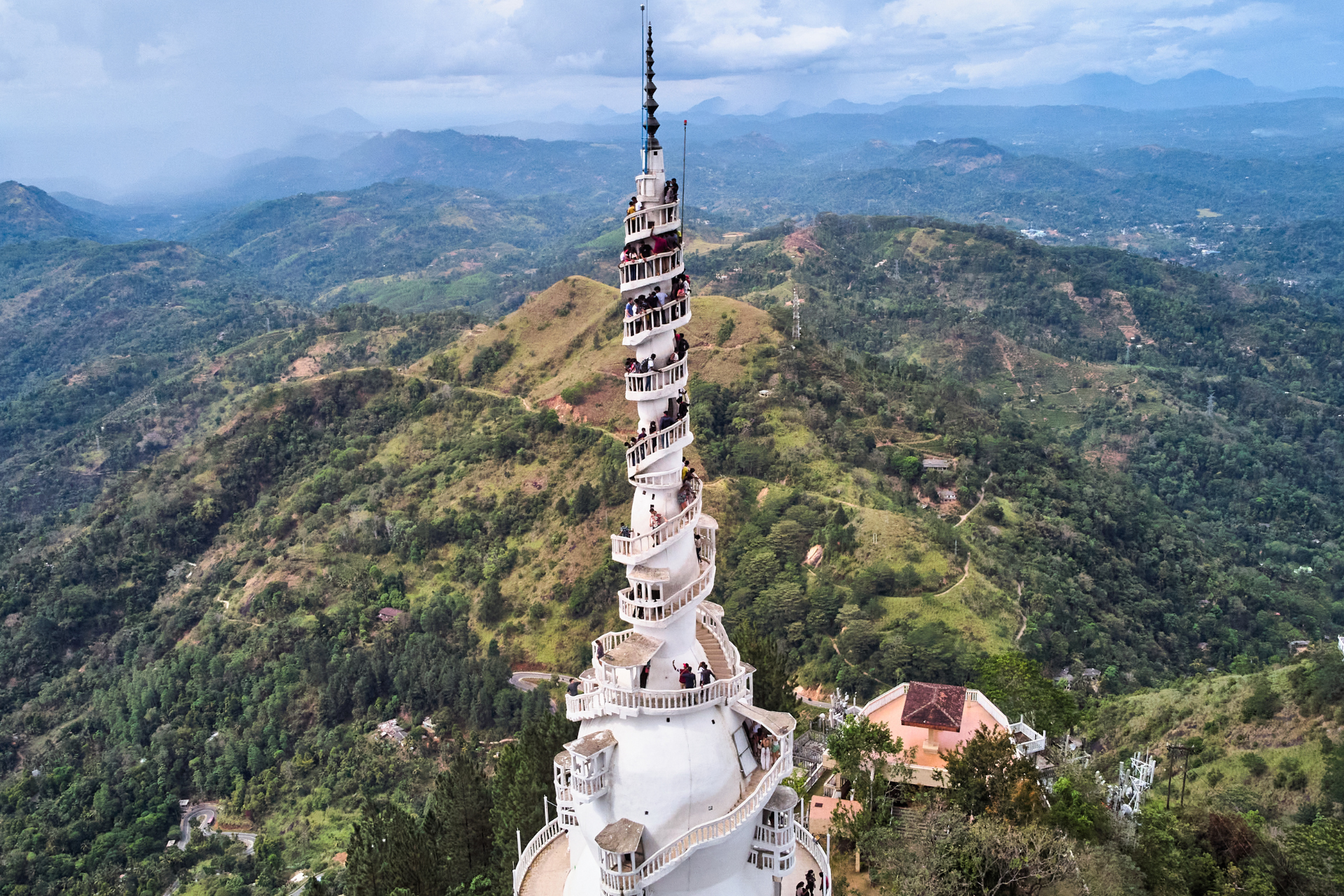Discovering the Dambulla Temple: A Glimpse of Sri Lanka’s Heritage
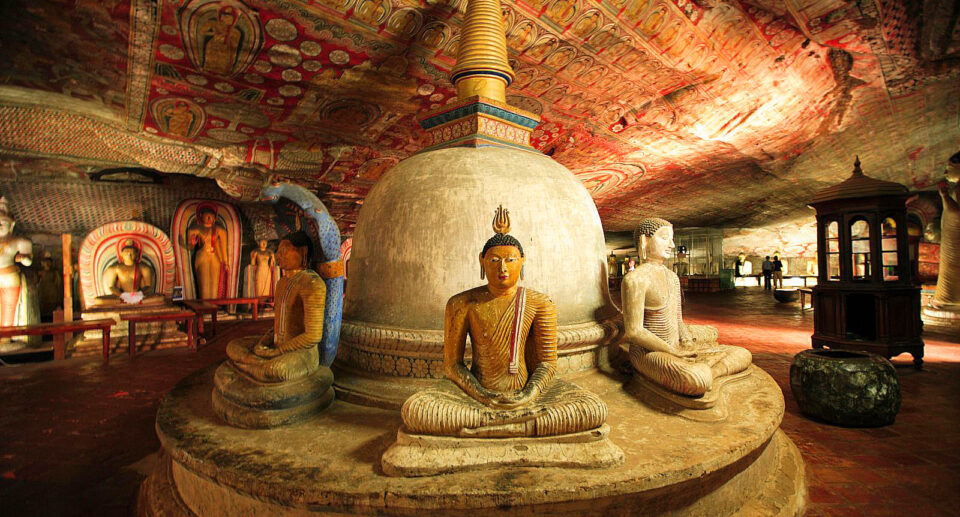
The Dambulla cave temple, also known as the Golden Temple of Dambulla, is a World Heritage Site in Sri Lanka, lying in the central part of the country. It lies 148 km east of Colombo, 72 km north of Kandy, and 43 km north of Matale.
The Dambulla cave temple, also known as the Golden Temple of Dambulla, is a World Heritage Site in Sri Lanka, lying in the central part of the country. It lies 148 km east of Colombo, 72 km north of Kandy, and 43 km north of Matale.
These would have been inhabited by prehistoric Sri Lankans before Buddhism came to Sri Lanka as there are burial sites with human skeletons dating back to 2700 years situated in this area- at Ibbankatuwa near the Dambulla cave complexes.
History
The date of this complex is as early as the 1st century BCE. It consists of five caves under a large overhanging rock with a carving done to create a drip line that kept the interiors dry. The architecture was beautified with arched colonnades and gabled entries in the year 1938. On the inside, the ceilings in the caves are painted with intricate patterns of religious images following the contours of the rock. There are images of Lord Buddha and bodhisattvas, along with other gods and goddesses.
The Dambulla cave monastery is still functional and it has continued to be the best-preserved ancient building in Sri Lanka. This complex dates from the third and second centuries BC when it was one of the largest and most important monasteries. The conversion, tradition has it, was done by Valagamba of Anuradhapura in the first century BC. Exiled from Anuradhapura, he sought refuge here from South Indian usurpers for 15 years. After wiping out the invader, the King built a temple in thankful worship. Many other kings added to it later and by the 11th century, the caves had become a major religious centre and still are. In the year 1190 Nissanka Malla of Polonnaruwa has adorned the caves by adding around 70 Buddha statues with gilding and beautiful decorations. In the 18th century, the surviving paintings underwent an extensive restoration and repainting under the Kingdom of Kandy.
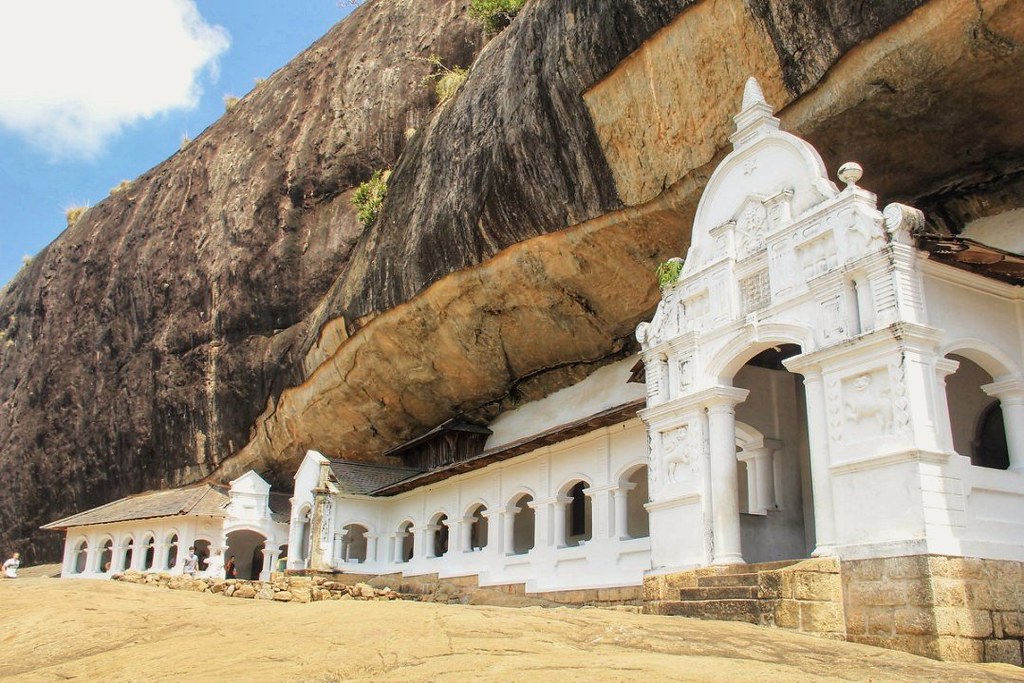
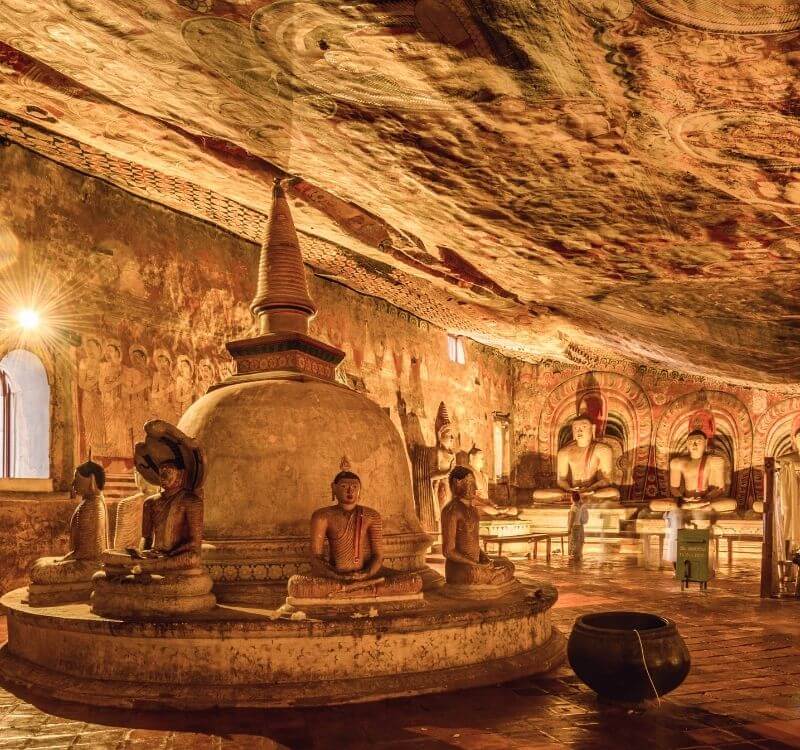

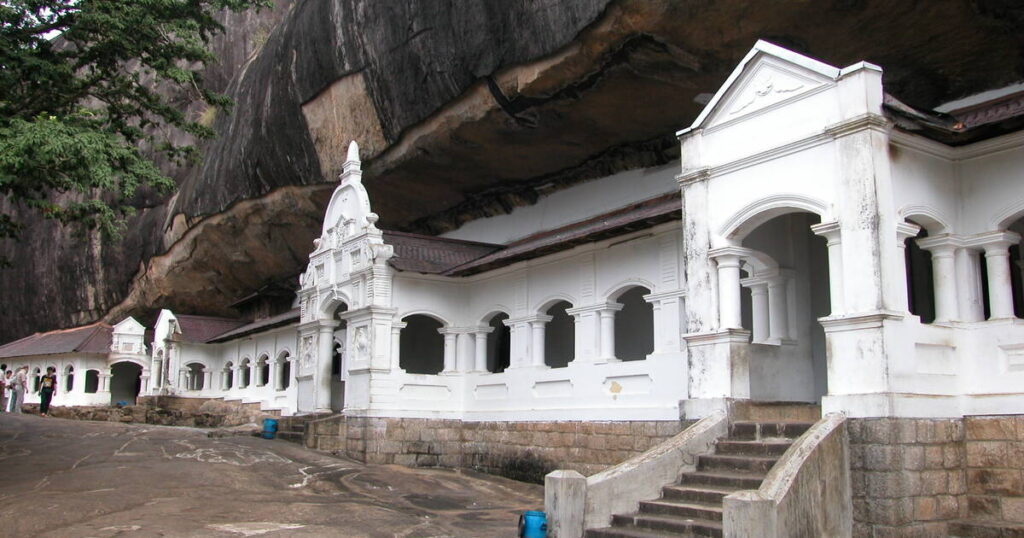
The five caves
The temple consists of five caves of varying magnitude and beauty. The caves, built at the base of a 150m high rock during the times of Anuradhapura (1st century BC to 993 AD) and Polonnaruwa (1073 to 1250), form by far the most magnificent effort in the many cave temples of Sri Lanka. Access is along the gentle slope of the Dambulla Rock, with a panoramic view of the surrounding flat lands, including the rock fortress Sigiriya 19 km away. Hundreds of swooping swallows divide the cave entrance at dusk. The biggest cave is about 52m from east to west and 23m from the entrance to the back; this magnificent cave is 7m high at its highest point. Also represented here are some Hindu deities, as well as the kings Valagamba and Nissankamalla, and Ananda, who was Buddha’s most devoted disciple.
Cave of the Divine King
The first cave is called Devaraja lena, or “Cave of the Divine King.” The record of the establishment of the monastery is inscribed in a 1st-century Brahmi inscription across the front of the entrance to the first cave. This cave is dominated by the 14-meter statue of the Buddha, hewn out of the rock. It has been repainted countless times in the course of its history, and probably received its last coat of paint in the 20th century. At his feet is Buddha’s favourite pupil, Ananda; at his head, Vishnu, said to have used his divine powers to create the caves.
Cave of the Great Kings
In the second and largest cave, together with the 16 standing and 40 seated statues of Buddha, are the gods Saman and Vishnu, which the pilgrims often decorate with garlands, and finally, statues of King Vattagamani Abhaya, who honoured the monastery in the 1st century BC, and King Nissanka Malla, responsible in the 12th century for the gilding of 50 statues, as indicated by a stone inscription near the monastery entrance. This cave is therefore known as Maharaja lena, “Cave of the Great Kings. On the left side of the room, the Buddha statue is carved out of the rock and is escorted by wooden figures of Bodhisattvas Maitreya and Avalokiteshvara or Natha. There is also a dagoba and a spring, which drips its curable water through a crack in the ceiling roof. In this cave, one finds tempera paintings from the 18th century, which depict scenes of Buddha’s life—from Mahamaya’s dream to temptation by Mara, the demon. Further pictures relate important events from country history.
Great New Monastery
The third cave, the Maha Alut Vihara, the Great New Monastery acquired ceiling and wall paintings in the typical Kandy style during the reign of King Kirti Sri Rajasingha (1747–1782), the famous Buddhist revivalist. In addition to the 50 Buddha statues, there is also a statue of the king.
Much of the conservation effort at the Dambulla Temple Complex has been focused on its mural schemes. According to Senake Bandaranayake, during an initial conservation project in the 1960s, the schemes were cleaned and a protective coating applied after the cleaning of murals.
The third cave, the Maha Alut Vihara, the Great New Monastery acquired ceiling and wall paintings in the typical Kandy style during the reign of King Kirti Sri Rajasingha (1747–1782), the famous Buddhist revivalist. In addition to the 50 Buddha statues, there is also a statue of the king.
Much of the conservation effort at the Dambulla Temple Complex has been focused on its mural schemes. According to Senake Bandaranayake, during an initial conservation project in the 1960s, the schemes were cleaned and a protective coating applied after the cleaning of murals.
Since the Dambulla Temple is an active ritual center, the 1982-1996 project’s conservation plans, developed to make this UNESCO World Heritage site more accessible, did not affect infrastructure and access to the site. Activities included renovation of hand-cut paving within the complex and modern lighting installations. Further investment in infrastructure of the Temple has provided a museum and further tourist facilities, tastefully situated away from the historical complex.
More recent inspections by UNESCO in 2003 have proposed an extension of the current protected zone around the complex to minimize damage to surrounding archaeological features.
The 1982-96 conservation project was oriented toward the preservation of eighteenth-century mural schemes, which form about 80% of the paintings that have survived at Dambulla. Most of these schemes were still in good condition by the late 1990s, although some had deteriorated, and the schemes of the bigger shrines—Vihara 3 and Vihara 2—were still extant with most of their eighteenth-century features intact.
Cleaning was not undertaken as part of the 1982-1996 project, which was instead devoted to the implementation of a series of remedial measures for the stabilization of the murals, and developing a long-term conservation strategy to minimize further human or environmental damage.
The most popular attraction in Dambulla, Sri Lanka is hands-down the Dambulla Cave Temples. These temples hold both religious and historic significance, but what most tourists come to see is their unique setting…inside a series of caves!
But besides the temples themself, the beautiful views over Dambulla just outside of the Cave Temples are also an attraction.
I personally think that the Dambulla Cave Temples are one of the most beautiful places to visit in Sri Lanka. If you only visit one temple while in Sri Lanka, make it the Dambulla Cave Temples!
So, in this guide, we’ll tell you everything you need to know about visiting the Dambulla Cave Temples including common questions about this popular Sri Lankan attraction.
Where is the Dambulla Cave Temple and how to get there?
You’ll find the Dambulla Cave Temple in the city of Dambulla. Dambulla is located 160 km from Colombo, 105 km from Trincomalee, or 73 km from Kandy, Sri Lanka.
The actual Dambulla Cave Temples are located up on top of a large rock that you must walk to. The walk takes about 20-minutes and involves climbing many stairs. There are two car parking lots in which there is a path up to the temples, but there is only one where you can buy the cave temple entrance ticket…
How much is the entrance fee?
For foreigners, the entrance fee to the Dambulla Cave Temple is 2,000 LKR per person. You must pay in cash. They do state the fee must be in paid LKR, however, the guy at the counter said we could pay in USD (we had no rupees at the time).
When to visit the Dambulla Cave Temples?
The ticket office is open from 7 am to 7 pm and the ticket booth closes at 5 pm.
best advice is to visit just before sunset. Not only is this the coolest time of the day, but you will also get an amazing view as the sun goes down which just makes the whole experience that much better.
The ticket booth at around 4:30 pm and this was perfect as we had time to walk up and check out the caves before sunset.
How long do you need to visit the cave?
You only need around 1 hour to explore the caves. If you are a temple enthusiast, allow up to 2 hours. I myself took a lot of photos and set up a tripod to get clear shots. Even with the short visit to the Golden Buddha, I left after 90 minutes.

